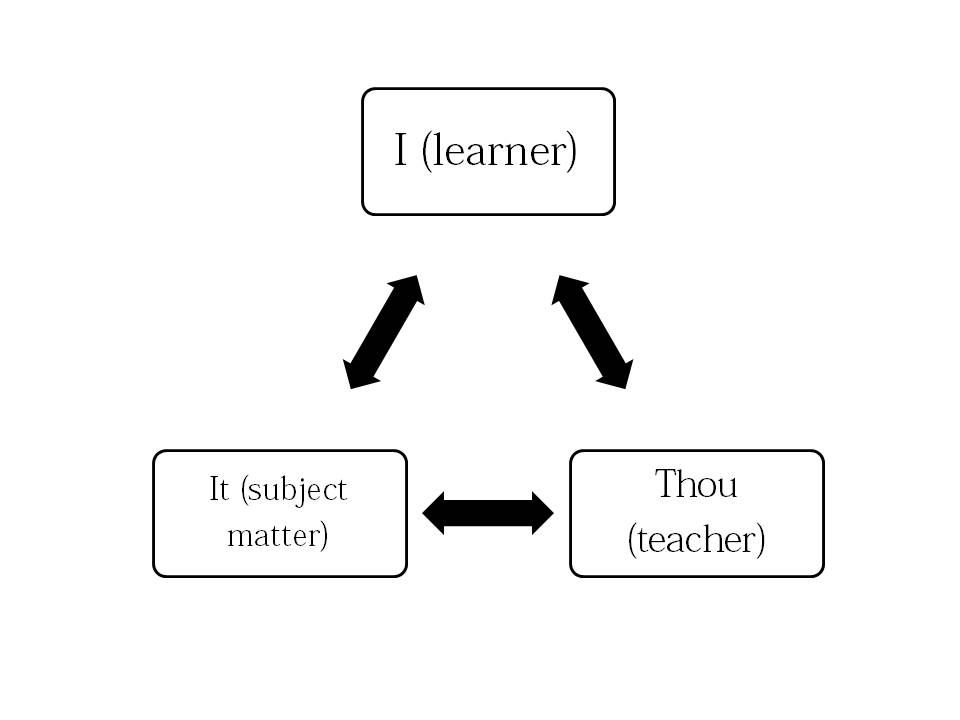I have been doing a lot more work with teachers this year as I am not in the classroom. I love watching people teach and talking to them about their teaching. It is clearly a passion for so many people and the modeling of lifelong learning has been so inspirational for me and their students.
One issue that seems to arise in all PBL classrooms, no matter how progressive the teacher, is this feeling that they need to somehow, someday really just not allow the students to be frustrated. Even those who buy into the whole PBL, student-centered, productive struggle pedagogy – deep inside they understand the belief from their own education, that math is black-and-white there needs to be some resolution that is acknolwedged and /or provided by the teacher.
I was talking to a friend about this dilemma a while ago (thanks @phiggiston!) and saying how interesting it is to me that a teacher’s belief from their past can, in the moment, while teaching, often override their beliefs in the current pedagogy. In other words, if a teacher has not experienced independent learning as needed in PBL, it is extremely difficult to not give into the impulse to “save” the students from that feeling of struggle or unease.
Well, coincidentally, @phiggiston has a background in both religious work and in psychotherapy training, so the first the he says to me is, “it’s kind of like the patient-therapist relationship in a way.” And I’m thinking, my teaching is nothing like being a therapist, but of course, I listened intently. I guess there is a Jungian theory that says that “sometimes a disease is the best training for a physician.” In fact, Jung goes as far as to say that
“a good half of every treatment that probes at all deeply consists in the doctor examining himself, for only what he can put right in himself can he hope to put right in the patient.”
_____________________________________________________________________________
So what does this mean for PBL teaching? I had to think of this for a while and also read some Jung as I am not up on the psychological theories that connect to education. I wasn’t quite sure that this “Wounded Healter” achetype paralleled the PBL teacher as much as I originally thought. Here are some points:
- Jung says that for the wounded healer the therapeutic encounter should be regarded as a dialectical process It’s not just I’m going to the doctor and she’s going to tell me what wrong with me. There needs to be some kind of dialogue in order for a real healing to happen. In the classroom, I would argue that this is true about the teacher-student relationship. Traditionally, it has been that not having dialogue would result in learning that was not as long-lasting, effective and/or connected to the students own ideas. It is pretty clear that the PBL teacher needs to create the dilectical process in order for the best learning to happen.
- Jung argues that the physician must help create a safe space where the “patient’s “inner healer” is made available to her unconsciously.” At the same time the physician, should let go of the way she is activiated by the same wounds. This idea is extremely relevant in the PBL classroom. Why do we want to make students comfortable and relieve their anxiety about mathematical learning? My take would be because we hate the way it makes us feel. Knowing that struggle is all to close in our memory can actually help us hand over the power to “heal themselves.” If we can get over that feeling, it will become more of the norm in the classroom.
- There are risks to this type of teaching – the risk of being vulnerable because you are looking at your own wounds, and also looking fragile to the patient (or student). This is a very common concern of teachers who are beginning PBL teaching.
“The experience of being wounded does not make him/her less capable of taking care of the patient’s disease; on the contrary, it makes him/her a companion to the patient, no longer acting as his/her superior.”
In other words, it is worth the experience of creating that open relationship. I go back to Hawkins’ theory of learning (I-thou-It) in which the relationships that exist form a triangle between teacher-student-material.

All of these relationships must be nurtured in order for the best learning environment to exist. (For more on this check out Carol Rodgers presentation slides here.)
_____________________________________________________________________________
So does this mean if you did not have this type of experience learning math that you can’t learn to empower your own students in this way? I think not. When I ilook back on my own mathematical experiences many of them were extremely traditionally taught. However, I think what you need to have inside you is both the belief that students are capable of owning and constructing their own knowledge and the ability to create a space that allows them to remain uncomfortable. You have to be willing to let go of your own insecurities and anxieties about learning math and realize that the more you do that, the more the students will feel it as well.
I am currently working on a quasi-research project about this and when/how PBL teachers choose to intervene in class discussion. If there is anyone who is interested in helping me out with this, I’d really appreciate it.